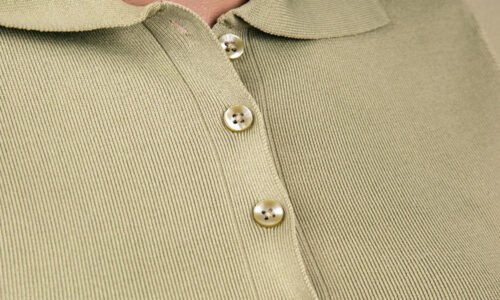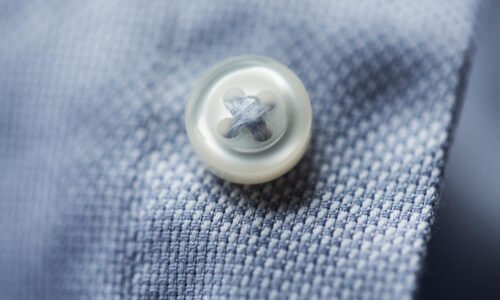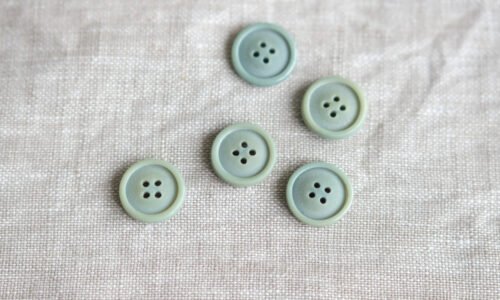Introduction to Button Types
In the world of fashion and design, buttons play a significant role, serving both functional and aesthetic purposes. Whether crafting a new garment, revamping an old piece, or undertaking a DIY project, the choice of button can dramatically influence the final outcome. Understanding the broad categories and common materials is essential for making informed decisions, especially when you need to buy 24 line buttons in bulk or seek the best 26 line button manufacturers.
Buttons come in various forms, each uniquely suited to particular applications. Broadly, they can be categorized into sew-through buttons, shank buttons, snap buttons, and toggle buttons. Sew-through buttons, featuring holes for stitching, are ubiquitous and versatile. Shank buttons, with their built-in protrusions, are preferred for their ability to stand away from the fabric, offering a more elevated appearance. Snap buttons are prized for their ease of use and quick fastening mechanism, commonly found on casual wear and children’s clothing. Toggle buttons, often used in coats and duffle jackets, bring an element of rustic charm. When exploring the types of buttons in 26 line, it’s essential to consider their specific applications to make the right choice for your project.
Understanding the material composition of buttons is equally crucial. Commonly used materials include plastic, metal, wood, and natural materials like shell and leather. Plastic buttons are highly versatile and come in a myriad of colors and designs, making them suitable for a wide range of clothing. Metal buttons, known for their durability, are often used in jeans, jackets, and uniforms. Wooden buttons add a natural, organic element to garments, offering a touch of warmth and authenticity. Natural materials like shell and leather provide an elegant, luxurious feel, often reserved for high-end fashion. When selecting the best 26 line button manufacturers, it’s vital to ensure that they offer a wide range of materials to meet the diverse needs of your designs.
This foundational knowledge of button types and materials sets the stage for deeper exploration into the specific applications and benefits of each category. As we delve further, you’ll gain insights into selecting buttons that not only enhance the functionality but also elevate the overall aesthetic of your designs, whether you’re looking to buy 24 line buttons in bulk or seeking to understand the types of buttons in 26 line.
Common Types of Buttons and Their Uses
Buttons are essential components in the world of fashion and functionality, coming in various styles and formats to suit different needs. Among the myriad types of buttons available, round buttons are perhaps the most ubiquitous. These are widely used on shirts, blouses, and casual wear due to their simple yet effective design. Coming in multiple sizes and materials, such as plastic, wood, and metal, round buttons fit seamlessly into various apparel contexts. Best among these types of buttons in 26 lines are those crafted from high-quality materials, ensuring both aesthetic appeal and durability.
Shank buttons are another common variety, notable for the small loop (or shank) on the back that fabric is sewn through. This unique feature allows the button to float above the fabric, reducing wear and tear while providing a more three-dimensional look. Shank buttons are often found in outerwear like coats and jackets, where both robustness and stylish embellishment are desired.
Toggle buttons diverge from traditional round designs, featuring elongated shapes that fasten through loops rather than buttonholes. Often employed in outerwear like pea coats or duffle coats, toggle buttons offer a distinct look combined with functional ease. Their larger size makes them a convenient choice for thicker fabrics and they stand out effectively as a design element.
Snap buttons bring utility and versatility to the table. These fastening devices consist of two interlocking discs, requiring a press-and-snap action to close. Ideal for sportswear, infant clothing, and some types of upholstery, snap buttons provide quick and secure fastening that suits both soft fabrics and more rugged materials. They are especially favored for their ability to be easily opened and closed, making them a practical option in varied contexts. When you buy 24 line buttons in bulk, snap buttons are often a go-to choice for their adaptability and ease of use.
Understanding these diverse types of buttons will equip you to make informed choices, whether you are sewing for day-to-day wear or crafting a specialized piece. By selecting the appropriate button type for your specific project, you can enhance both the functionality and aesthetic quality of your creations. Whether you’re focused on sourcing the best 26 line button manufacturers or considering different types of buttons in 26 lines, knowing your options will lead to better outcomes in your designs.
Specialty Buttons and Unique Differentiators
Beyond the common types of buttons, there exists a fascinating world of specialty buttons designed to meet diverse needs and add flair to various projects. Decorated buttons, for example, are meticulously crafted with intricate designs, often using materials such as enamel, gilt, or gemstones. These buttons serve as focal points on garments or accessories, transforming basic designs into statement pieces. By opting for decorated buttons, you can effortlessly elevate the aesthetic appeal of a simple outfit, ensuring it stands out. When searching to buy 24 line buttons in bulk, choosing decorated buttons can be an excellent way to add a touch of luxury to your collection.
Vintage buttons, on the other hand, offer a nostalgic charm that is hard to replicate with modern designs. Sourced from different eras, these buttons are usually made of materials like Bakelite, glass, or metal. Their unique patterns and craftsmanship make them perfect for adding an old-world allure to contemporary clothing or for restoring antique garments. Collecting and using vintage buttons not only supports sustainable fashion by reusing old items but also imbues your projects with a sense of history and timeless elegance. If you’re in the market for the best 26 line button manufacturers, exploring those who offer vintage-style buttons could open up new creative possibilities.
Eco-friendly buttons fulfill the growing demand for sustainable materials in fashion. These buttons are crafted from renewable resources such as bamboo, coconut shell, or recycled materials. They are biodegradable and have a minimal environmental impact, making them a responsible choice for eco-conscious consumers. Additionally, the textures and natural appearances of these buttons can lend a rustic or organic vibe to your creations. For those looking into the types of buttons in 26 line, eco-friendly options provide an appealing blend of aesthetics and environmental responsibility.
By understanding the distinctive attributes of these specialty buttons, you can make informed decisions that align with the specific needs of your projects. Whether you aim to create a striking visual impact, pay homage to vintage styles, or promote sustainability, there is a unique button tailored to meet your objectives. Embracing these specialty buttons can significantly enhance your designs, making your final product not just functional but also a true reflection of your creative vision. Whether you’re looking to buy 24 line buttons in bulk or seeking the best 26 line button manufacturers, knowing your options in specialty buttons will elevate your craft to new heights.
Choosing the Right Button for Your Project
Selecting the appropriate button for your project involves a careful balance of aesthetics, functionality, and durability. To make an informed decision, it is essential to consider the fabric type, garment style, and the intended use of the button. Different types of buttons cater to various needs; for instance, delicate fabrics like silk may require small, lightweight buttons to prevent damage, whereas heavy materials such as wool might benefit from sturdier options.
Garment style is another crucial factor. For formal clothing, classic button designs such as the four-hole button often work best, offering a timeless and professional appearance. Conversely, for casual attire, you might opt for more whimsical or colorful button styles to add character. Understanding the nuances of different types of buttons can vastly improve the end look and feel of your project.
When considering functionality and durability, think about the button’s material. Plastic buttons are versatile and budget-friendly, while metal buttons offer enhanced strength and a touch of sophistication. Wooden buttons provide an organic, rustic appearance but may not be as durable in the long term. Fabric-covered buttons can be an excellent choice for cohesiveness but require meticulous sewing techniques to look perfect. Therefore, deciding on the right material is as significant as the button design itself.
Securing buttons correctly ensures that they withstand repeated use and laundering. A double-threaded needle and firm knots are essential to attach buttons securely. Lockstitching the thread every few stitches can help prevent unraveling. For thicker fabrics, creating a shank—a small sewing loop—between the button and fabric can make buttoning easier and more durable. When looking to buy 24 line buttons in bulk, opting for products from some of the best 26 line button manufacturers known for quality can save heartbreak and repairs.
By paying attention to these details, your finished project will not only look professional but also stand the test of time. Selecting the right types of buttons and securing them properly transforms your garments from merely homemade to heirloom-quality pieces.


